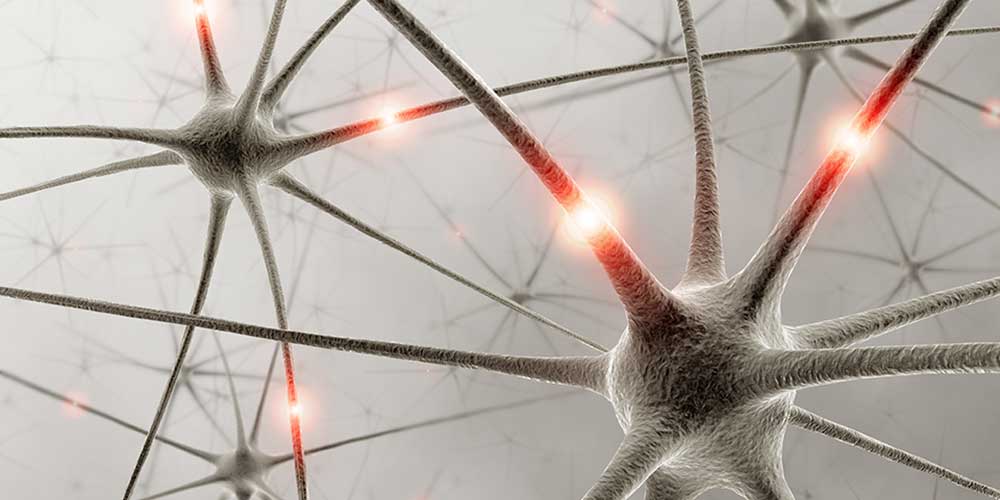How to maintain your creative edge
Feeling jaded?
Some of you have told us you’re feeling jaded, a bit tired and less on top of your game than you’d like. Your last holiday seems a distant memory and the next one still a while off! In this context, your question to the UGM team was: what can we do to refresh our thinking quite quickly, with no cost, no time and with no starting point of special skills in being creative? This briefing takes up the challenge you’ve set us!
What does neuroscience tell us about creativity?
UK neuroscientist, Susan Greenfield, stresses the key role played by the connections between brain cells. These connections become increasingly more personalised as we mature, reflecting our own unique experiences – even if we’re an identical twin. Bit by bit, we build up complex networks of associations that help us to link disparate elements together to solve problems and figure out the challenges we confront.
Largely, by the time we are adults, these connections become tried and true pathways that serve us well and promote cognitive efficiency. But, as Greenfield comments, the essence of creativity is the capacity to bring together elements which have not been brought together before, such that their juxtaposition triggers in others a new significance or meaning.
The need for unpredictable associations
Essentially, this requires moving outside the normal cycle of thought associations into a fresh and different way of thinking. This insight has led researchers to explore how we can best support creativity by allowing one association to lead to another and then another, without imposing the constraints of normal checks and balances.
They’ve found that in the brain these typical checks and balances function as a result of specific hard-wired circuits that are very persistent in their activation. They preclude the activation of any other circuits. They tend to take us down those old tried and true paths, away from creative new approaches. So how can we stimulate the brain to allow looser, less predictable associations to occur?
Priming: the key to thinking in more flexible, creative ways
Creativity research stresses the importance of priming your mind by working intensely (even feverishly) on the challenge or problem facing you but then letting go completely, releasing the effort, and engaging in something quite different. For this to work, the priming stage needs to be thorough. You’ll need to build a sound understanding of the issue and examine all aspects of it. Think it through. Read what you can get hold of. Talk about it with colleagues. You are encouraging your brain to focus hard.
As Richard Wiseman from the University of Hertfordshire points out, our brains are incredibly good at seeing what they want to observe. When we’re hungry, our brain focuses on finding food. When we’re thirsty, it looks for something to drink. It seems that just the same process is vital for having great ideas. Wiseman and his team found that, “People who have good ideas are skilled at priming themselves with a particular problem and therefore spotting the solution to that problem – or something that will lead them to that solution – when it happens to pop up in front of them.”
The primed brain detects chance opportunities
In a famous US experiment, volunteers were shown into a room that had different small objects scattered around and two strings hanging down from the ceiling. They were given the task of tying the ends of the two strings together. But the length of the strings and the distance between them meant they couldn’t simply grasp them both and bring them together. The solution was to tie a small object to one of the strings and, using it as a pendulum, swing it towards the other one.
After the volunteers had been left to work on the problem for a while, a researcher came into the room and chatted to them. On leaving, they brushed against one of the pieces of string, causing it to start swinging much as a pendulum does. Suddenly, the majority of the volunteers came up with the pendulum solution. None guessed they’d been given a hint. Instead, unknown to them, their brains had been primed to find a solution by focusing on the problem. They were then quickly able to make the most of an apparently random event.
After you prime your brain, expose it to diverse material and experiences
But being primed is just part of the key to creative thinking. It’s also important to feed your primed brain with lots of diverse material and diverse ideas. You could randomly flick through newspapers or magazines. Go to a gallery or museum. Search the internet with no particular aim in mind. Go on a train or car trip. Relax and don’t push or put pressure on yourself.
Simply immerse yourself in novel experiences and let your brain find connections and be stimulated. Changing perspective is the aim of this step. Have some fun. Watch a comedy DVD. Take a break. Go for a walk. The primed brain seems to perform well when it’s given some time to sift through lots of disparate thoughts.
Neuroscience is showing us: a primed mind fed with diverse material results in great ideas!
PRACTICAL IDEAS TO APPLY IN YOUR BUSINESS
4 steps to becoming more creative
1. Prime
Work intensively on your problem. Then stop all the effort. During the release stage, stimulate your brain with diverse inputs and experiences. Then leave it up to your brain to generate some fresh connections and associations.
2. Change perspective
Altering your perspective on an issue has been shown to produce new insights. Imagine how someone else might look at the problem: a child, a friend, an artist, Churchill, Mandela, Einstein. Consider doing the exact opposite of every solution you have come up with thus far.
3. Have some fun
Having fun and laughing has been shown to stimulate creativity. Take a break and watch a comedy!
4. Get curious
If everything feels too routine and familiar, your brain goes on to automatic pilot. Put some unexpected questions to yourself every day to encourage fresh thinking. Researchers suggest questions such as, ‘Why do people laugh?’ ‘Why are bananas yellow?’ How cmoe yuor bairn is albe to udnertsnad tihs snetence eevn tghouh olny the frist and lsat ltetres of ecah wrod are crreoct?



